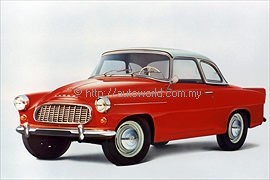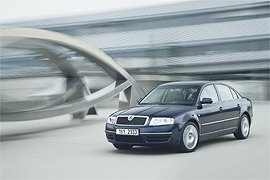The History of Skoda
Skoda, a carmaker which not many people realize is one of the oldest in the world (having produced its first car in 1906), has been well known in Europe for its low-priced models. In fact, its cars have been involved in motorsports for 100 years and in UK, a recent survey by a magazine found that Skodas were rated very highly.
While it has a 52% share in its home market of the Czech Republic, 83% of its production (2001=460,000 units) is exported, with 78% alone sold in western Europe and Russia. Exports have always been of great importance to the company and were once even used in barter trade. In 1937, vehicles exported to Poland were bartered for sausage casings by a local company. Skoda exported these casings to Belgium where it traded them for laces earning its money in this way.
Relatively few are sent to Asia and thus, the make is not particularly well known in this part of the world. In 1982, Skoda did make an attempt to enter the Malaysian market and appointed Sarawak Motor Industries (SMI) which had an assembly plant in Kuching, Sarawak. The plant was assembling Toyota Land Cruisers and BMW 3-Series cars then (which were sold through its subsidiary BMW Concessionaires in the early 1980s) and there was a plan to assemble the Skoda 120 LS (Estelle).
A small batch was assembled and attempts were made to sell them in Peninsula Malaysia. They were fairly cheap but against the Corollas, Sunnys and Lasers, the rather old design was not attractive to consumers. So hardly any were sold and those which were assembled were quietly sold off in the more rural areas of Sarawak. A couple of units were, however acquired by a rally driver named Bastamam Hamzah, who entered them in local rallies for some years (he still drives one at his advanced driving school in Selangor!). It’s not surprising that SMI gave up trying to sell Skodas and the make disappeared from local car magazine price lists by 1984.
Like the VW Beetle, the 120 LS had its engine in the back, beyond the rear axle, which made for rather ‘unusual’ driving dynamics. The rear axle design was also such that there was a ‘jack-up’ effect during hard cornering.
Perhaps the design of the 120 LS was forgivable because it was a very old design dating back to 1964. Up till the 1950s, Skoda had been a notable company but as communist philosophies limited the country’s advancement and technological development, Skoda’s product development was also inhibited and as with carmakers in Russia and Poland, its models continued to have unchanged technology. While Russian and Polish carmakers had, at one stage, been able to get licences from Fiat to make clones (Lada and Polski), Skoda relied mostly on its own technology.
The fall of the ‘Iron Curtain’ in 1989 allowed the Czech Republic and many Eastern European countries to progress into free market economies. Foreign carmakers were keen to invest in these under-developed markets where labour could also be cheaper. VW looked east (eastern Europe, that is) and decided to invest in Skoda in the early 1990s.
The deal was good for Skoda as the German carmaker provided not only became a shareholder but also provided money to modernize production facilities and more importantly, platforms for brand new models. Furthermore, as part of the VW Group, Skoda was able to get R&D support of a global player, a major advantage for a small company.
From the mid-1990s onwards, Skoda’s product line was quickly refreshed, first with the Felicia and then the Octavia. These are historically significant names for the company, having been used for models decades ago. Build quality, which had usually been a joke with cars from communist countries, improved very significantly with the obsessive mentality of quality of the Germans, the new Skodas impressed buyers greatly and sales have been rising.
All the old Skodas are now in the museum rather than the showrooms, and all the models sold today have modern engineering (much of which is VW based). More importantly, there are actually updates of existing models! The range consists of four models – the Felicia, Fabia and Octavia and Superb, the latter being the first large Skoda introduced in 50 years. These models have bodystyle variations such as hatchback, sedan, pick-up and stationwagon. Skoda also makes the VW Caddy at one of its four factories for VW.
From recent reports, Skoda’s increasing popularity seems to be of concern to VW’s management. It is being perceived as a possible threat to VW’s lower range and it seems like some strategies are now being introduced to ‘slow down’ Skoda in the market place. VW’s new boss, Berndt Pieschestrieder, has already decreed that there will be no more new models for the Czechs and worse, the recently-launched Superb will be retired in 2005!

































